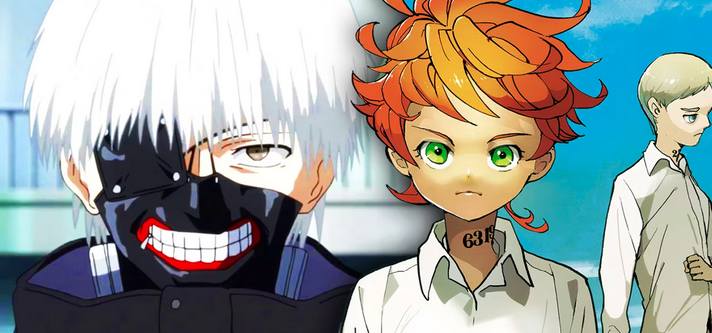Manga, the beloved form of Japanese comic books and graphic novels, serves as the lifeblood of the anime industry. Anime adaptations of the manga have been a staple in the world of animation for decades, captivating audiences worldwide.

Manga on Anime Adaptations
The Source Material: Manga
Understanding Manga as the Foundation
Manga, often described as the Japanese equivalent of comic books, is a versatile medium. It tells stories through a combination of illustrations and text, catering to diverse genres and audiences. Manga covers everything from action-packed adventures and heartwarming romances to mind-bending science fiction and thought-provoking dramas. Its inherent versatility allows it to connect with readers on multiple levels.
In-Depth Character Development
One of the standout features of manga is its ability to provide intricate character development. Through the combination of expressive illustrations and well-crafted dialogue, manga artists can delve deep into a character’s psyche, offering readers a profound understanding of their motivations and emotions. This depth is invaluable when translating characters from manga to anime, as it provides a strong foundation for voice actors and animators to work with.
World-Building and Artistic Expression
Manga artists are masters of world-building, crafting intricate settings and atmospheres that draw readers into their stories. The detailed artwork and panel layouts allow for creative storytelling techniques, often featuring stunning visuals that captivate readers. This aspect of manga serves as a visual blueprint for animators, helping them recreate the manga’s world faithfully.
Adaptation: From Page to Screen
Bringing Manga to Life
Adapting manga into anime is a delicate and exciting process. This transition requires a skilled team of animators, directors, voice actors, and writers who understand the source material’s nuances.
Storyboarding and Visual Continuity
Storyboarding plays a pivotal role in translating manga into anime. This process involves breaking down the manga’s panels into scenes and frames, ensuring a seamless visual flow. While some anime adaptations stick closely to the manga’s visual style, others add unique touches to enhance the story’s impact.
Voice Acting and Soundtrack
Voice acting is another crucial component. Talented voice actors breathe life into the characters, making them relatable and memorable. A well-cast voice actor can capture a character’s personality and emotions, enhancing the viewer’s connection. Additionally, the choice of music and soundtrack complement the narrative, intensifying emotional moments.
Challenges in Adaptation
Filler Episodes and Original Content
While manga often provides an abundance of source material, it can be challenging for anime adaptations to maintain a consistent pacing. To avoid catching up to the manga’s ongoing storyline, anime series may include “filler” episodes or create original content not found in the source material. These episodes aim to keep viewers engaged while giving the manga time to progress.
Handling Divergent Endings
Another challenge arises when an anime adaptation catches up to its source material, leaving viewers without a resolution. In some cases, anime studios may choose to create an original ending for the series. While these endings can be satisfying, they occasionally differ from the manga’s conclusion, sparking debates among fans.
The Impact on Pop Culture
Global Popularity and Recognition
Manga-based anime adaptations have gained immense popularity worldwide. The influence of these adaptations extends beyond the screen, with manga and anime conventions drawing enthusiasts from various corners of the world.
Cultural Exchange and Appreciation
Anime adaptations have facilitated cultural exchange and appreciation. Through these adaptations, international viewers gain insights into Japanese culture, traditions, and societal norms. Conversely, anime adaptations also serve as a window for Japanese audiences to explore stories from other cultures, fostering a sense of global interconnectedness.
Continuity and Fandom
Manga and anime adaptations often go hand in hand, creating a symbiotic relationship between the two. Fans of a particular manga can enjoy watching their favourite stories come to life on screen. This continuity builds a loyal and engaged fanbase that can drive the success of both the manga and anime.
Crossover Success Stories
In addition to enhancing the storytelling experience, manga adaptations also offer unique opportunities for cross-promotion and merchandising. This not only expands the franchise’s reach but also strengthens its financial prospects.
Manga’s Role in Genre Exploration
Manga serves as an exploratory playground for creators. It often pioneers new and experimental ideas that might not initially receive approval as full-fledged anime series. By testing the waters with manga, creators can gauge audience interest and fine-tune their concepts before committing to a larger-scale anime production. As a result, some of the most innovative and unique anime adaptations stem from manga that dared to challenge conventions.
Conclusion
In the realm of animation, manga stands as a rich source of storytelling that has played an integral role in shaping the world of anime adaptations. Its capacity for character development, world-building, and artistic expression serves as a blueprint for animators and voice actors to bring captivating stories to life. As manga continues to thrive and diversify, its influence on the anime industry remains steadfast, ensuring a bright and imaginative future for both mediums.
You may find this information useful:
